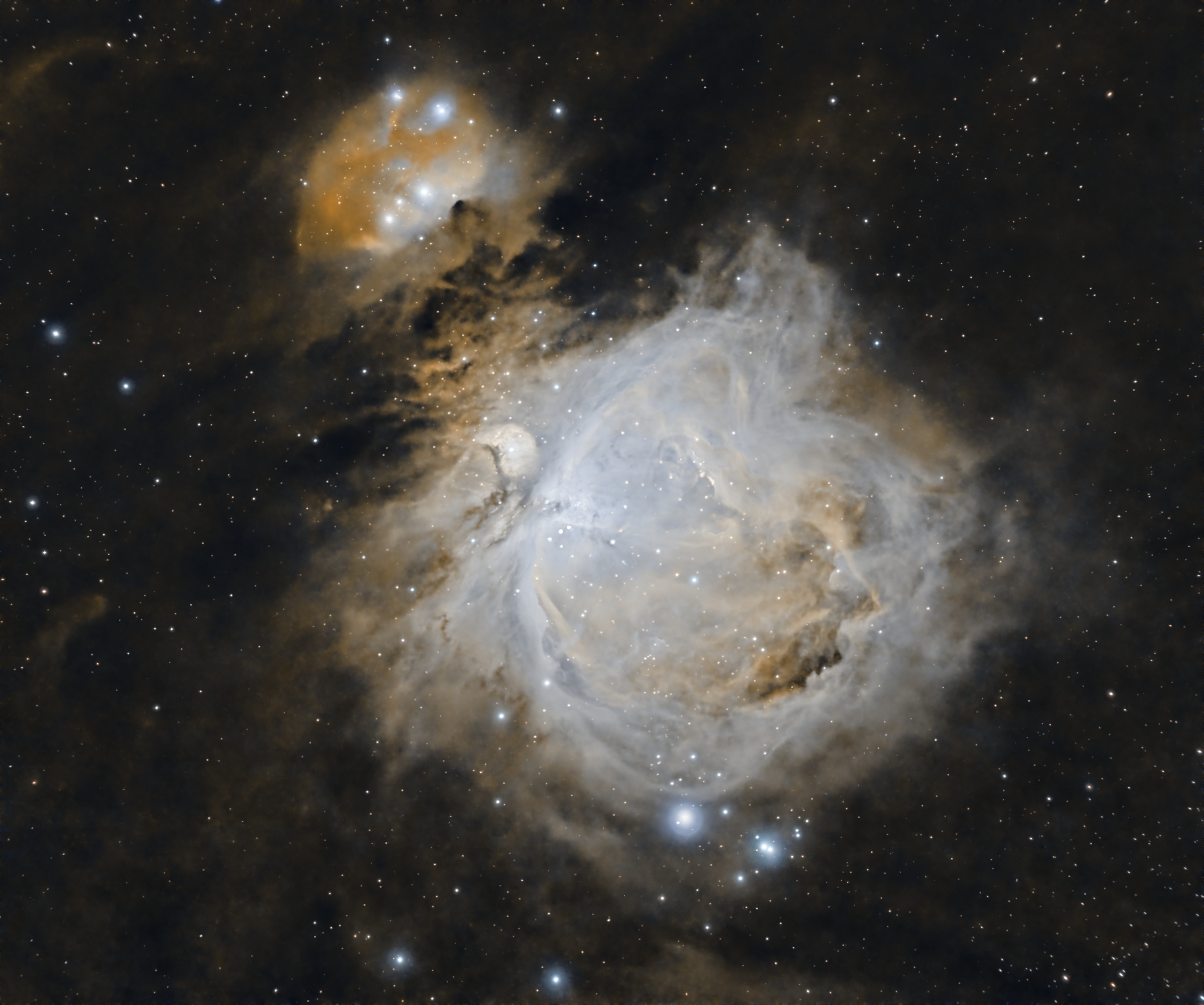I also like the traditional colours frmo my OSC 294MC Pro and L extreme filters more at this time. Given my limited competency in processing, I was trying to play around with Narrowband Normalization, but didnt get any satisfactory results. The result I posted above was from narrowband normalization. Also posting the traditional colour here below, please do let me know how to improve further.
1. Dynamic background extraction
2. Starless and star separation (StarNet)
3. NoiseXterminator (Will try to be less aggressive, habitual offender of using default setting)
4. SetiAstro Statistical stretch (0.10 mean, ~half way through stretch curves, linked stretch)
5. Image 1 = Outcome frmo Step 4. Image 2 = Outcome of running HDR Multiscale transformation (with overdrive ~0.35). Pixel Math for Image 3 = (Image 1 + Image 2)/2 which i took further for processing
6. Created luminance layer frmo Image 3. Stretched it further to create a mask (to the extent the core is masked ~0.90% and darker areas are not masked)
7. Generalized hyperbolic stretch on step 6 to keep breaking the steep peaks until it is smoothened out. Probably this is where I overstretched the data to the extent lot of noise shows up?
7.5 - I dont remember if i missed taking out the mask or something - I played around with curves and saturation. The running man nebula got a weird colour finally as an outcome!!
8. Now this is where I did narrowband normalization and created the faux palette with miserable colours!
9. Star stretch on star mask
10. Pixel maths to get back star and starless images. Given the bright core and bright (already saturated from Lextreme exposures) stars, this was difficult. Used ChatGPT recommendations and this one was relatively better: 1 - ((1 - starless) * (1 - stars^0.6)). ChatGPT says this is Controlled Screen with Highlight Suppression.




